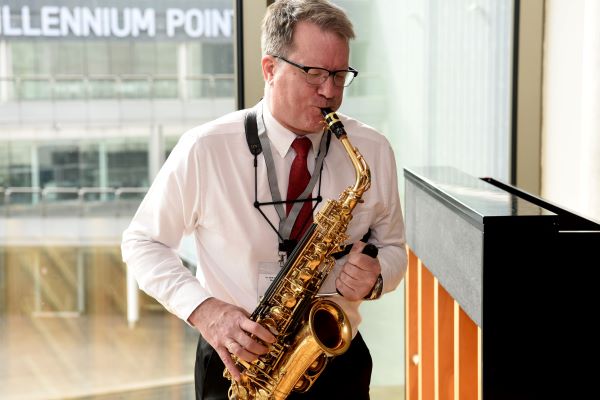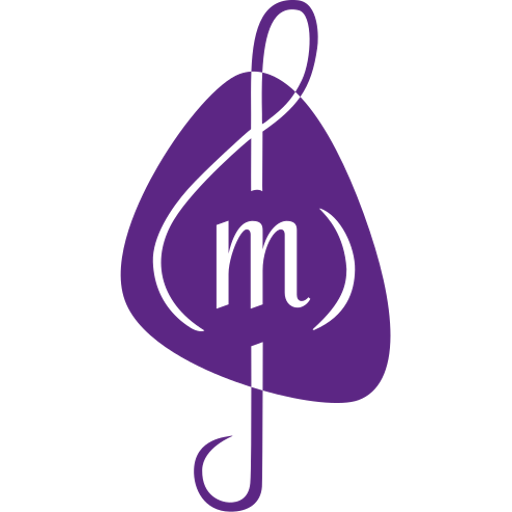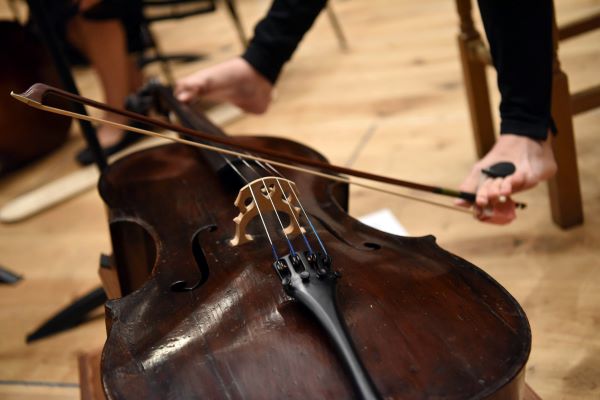Everyone has heard of the achievements of sportspeople with disabilities in the Paralympics. But when it comes to inclusion in music making, there is still a huge lack of awareness among teachers, parents, retailers and the disabled community. Several organisations in the UK are working together to change that. MUSEDU recently participated in a webinar on inclusive music making and spoke to Rachel Wolffsohn from the OHMI Trust.
What does inclusion in music making mean? It is certainly not about finding other exercises for the disabled child to do while the rest of the class are having their instrumental lesson. Sadly, this is often still the case in our current school system. Inclusion is about empowerment. “There is no reason why deaf people should not be able to play a musical instrument”, says professional flutist Ruth Montgomery in the webinar. She is deaf and points out that we need to be aware that there are different levels of hearing.
It may not be obvious to everybody that in inclusive music making, we are looking at a very diverse group of individuals facing different challenges. It could be about accessing the location in a wheelchair, or about having sheet music available in larger print. One person may have been born with an impairment, another one may have had an accident which caused this situation later in their lives. And we are talking about a rather large proportion of people: According to researcher Sarah Mawby, 12.1% of students in England have some sort of a disability.
It is essential to give them a choice and enable them to play their preferred instrument. Ideally, a solution can be found that meets both their physical needs and their musical interest. So we need to think: What if we put the instrument on a stand so that you don’t need to worry about dropping it and can focus on playing it? What if you hold the instrument in a different way? What if you played the cello with your feet? Can the violin be played downwards?
“Show me how you write”

Asking these kinds of questions is Rachel Wolffsohn’s speciality. She works at the OHMI Trust, a UK-based charity for the development and adaptation of musical instruments for people with physical disabilities. When figuring out the best solution, it is essential to think outside the box, and to involve the person who knows best: the impaired musician. Rachel usually asks them: “Show me how you write.” From the way a person holds a pencil, she can draw conclusions about how they could play a particular instrument. She also observes their individual workarounds for daily tasks. “They’ve got a lot to teach us”, she says. Sometimes, it will be possible for them to play a regular instrument, sometimes it will have to be adapted.
For this purpose, OHMI cooperates with instrument makers. As artisan-made instruments are expensive, the charity hopes to lower the production costs and broaden the range of adapted instruments. These include entry-level plastic recorders out of a 3D printer as well as high-end instruments for professionals. Every two years, OHMI invites instrument makers, technicians and individuals from all over the world to submit their innovative solutions. The competition is currently still open. The aim is to avoid duplication of work and make existing solutions available to others.
Solutions for brass instruments are relatively easy and cheap. These instruments are usually played with one hand and held with the other, so they can be put on a support stand. For woodwind instruments, however, a complete rework of the keywork structure may be necessary – which is very pricey. “Strings are the hardest, because neither hand is doing a very mechanical task”, says Rachel. A good solution is the artiphon – an instrument that looks cool, can be tapped or strummed with basic gestures and adapts to any style or position. And it sounds like a string instrument. Many of these solutions can be found in the free PDF “Guide to Buying Adaptive Musical Instruments”.
What about the piano? “For keyboard instruments, at least there is a vast repertoire for one hand, especially the left”, Rachel points out. “But these are often very dexterous pieces. The question is: How do you get from beginning to that stage, when every book on the way requires two hands?” An additional obstacle is the exam system. In the UK, learning an instrument involves participating in graded exams by ABRSM or Trinity College. But their current piano syllabus requires scales to be played with both hands starting from Grade 2.
Inclusion also means to empower impaired musicians to take up a professional career. “Disabled people often don’t go into music making. So it is very hard to find those who have cut through”, says Rachel. As in sports, they play an essential part as role models – like the one-handed pianist Nicholas McCarthy who is one of OHMI’s patrons. Or Felix Klieser who plays the French horn with his foot. “Felix is often on at a popular classical music station. Nobody ever mentions that he hasn’t got any arms. And that’s where we want to get to”, says Rachel. “We need to judge individuals on their musical performance and on an equal goal of performance level to everybody else.”
Links and resources:
Recorded Webinar: “Inclusive and accessible music making with adaptive music instruments”
Guide to Buying Adaptive Musical Instruments
Take It Away Consortium
OHMI – Enabling Music-Making for the Physically Disabled
OHMI Competition
Ruth Montgomery / Audiovisability
Drake Music – Music, Disability and Technology
WeShallNotBeRemoved – UK Disability Arts Alliance
Tabula Musica (Switzerland)




